CAMPAIGN:AUTO APPLY PARKING BRAKE MALFUNCTIONS

SUBJECT: AUTO APPLY PARKING BRAKE MALFUNCTIONS -------------------------------------
MODELS: 1990 P3 MOTOR HOMES WITH 16,000# GVW RATING (RPO C7P) EQUIPPED WITH AUTO APPLY PARKING BRAKE AND 178" AND/OR 208" WHEEL BASE ---------------------------------------------------------------------
This Revised Campaign Bulletin identifies The Part Number And Labor Time For A New Longer Relay Valve Inlet Pipe Assembly. Motor Home Owners Who Previously Brought Their Vehicles in And An Attempt To Perform The Original Campaign Was Made And The Relay Valve Inlet Pipe Assembly Required Modification, Tube Bending, Or Was Too Short, Should Be Contacted And A Service Date Arranged. Motor Homes That Have Had Body To Chassis Height Modifications Or Have Had The Relay Valve Relocated May Require This New Longer Hose. All Copies Of 90-C-50 Should Be Destroyed.
The National Traffic and Motor Vehicle Safety Act, as amended, provides that each vehicle which is subject to a recall campaign of this type must be adequately repaired within a reasonable time after the owner has tendered it for repair. A failure to adequately repair within 60 days after tender of a vehicle is prima facie evidence of failure to repair within a reasonable time.
If the condition is not adequately repaired within a reasonable time, the owner may be entitled to an identical or reasonably equivalent vehicle at no charge, or to a refund of the purchase price less a reasonable allowance for depreciation.
To avoid having to provide these burdensome solutions, every effort must be made to promptly schedule appointments with owners and to repair their vehicles as soon as possible. As you will see in reading the attached copy of the letter which is being sent to owners, the owner is being instructed to contact the GMC Truck Division Consumer Relations Office if the dealer does not remedy the condition within five days of the mutually agreed upon service date. If the condition is not remedied within a reasonable time, they are instructed how to contact the National Highway Traffic Safety Administration.
DEFECT INVOLVED
General Motors has determined that a defect, which relates to motor vehiclesafety, exists in CERTAIN 1990 P3 Motor Home Chassis. If there is a fluid leak in the auto-apply hydraulic parking brake system, the parking brake may apply while the vehicle is being driven. The "BRAKE" telltale would come on and there would be a noticeable drag when driving. Under these circumstances, there would be no loss of control of the vehicle, and the driver should pull the vehicle off the road and seek proper service. If the driver ignores the "BRAKE" telltale and continues to drive with the parking brake applied, the parking brake system subsequently could fail. If the driver then attempted to park the vehicle and released the brake pedal, the motor home could roll. However, the brake pedal could still be applied by the driver to prevent the motor home from rolling.
To correct this condition, dealers must follow the procedure contained in this bulletin and install an Auto Apply Park Brake Service Kit P/N 12380411, bleed the hydraulic power system and adjust the parking brake.
VEHICLES INVOLVED
Involved are CERTAIN 1990 P3 Motor Homes with 16,000# GVW rating (RPO C7P) built within the following VIN breakpoints:
Year Model From Through ---- ----- ---- -------
1990 P31832 SOP EOP (178" Wheelbase)
1990 P32032 (208" Wheelbase) SOP EOP
The specific vehicles involved in this campaign have been identified by Vehicle Identification Number (VIN) Computer Listings. These listings are furnished to all involved dealers with the campaign. These listings are furnished to all involved dealers with the campaign. Dealers should confirm vehicle eligibility through VISS (Vehicle Information Service System) or SERVICENET prior to beginning campaign repairs.
DEALER CAMPAIGN RESPONSIBILITY
Dealers are to service all vehicles subject to this campaign at no charge to owners, regardless of mileage, age of vehicle, or ownership, from this time forward. Dealers are to inspect and correct all affected vehicles in new and used vehicle stock prior to their sale.
Whenever a vehicle subject to this campaign is taken into your new or used vehicle inventory, or it is in your dealership for service in the future, you should take the steps necessary to ensure the campaign correction has been made before reselling or releasing the vehicle.
Owners of vehicles recently sold from your new vehicle inventory are to be contacted by the dealer and arrangements made to make the required correction according to instructions contained in this bulletin.
If the name and address of the owner of an involved vehicle was unavailable to GMC Truck Division at the time of campaign initiation, the dealer must determine the owner's name and address from the dealership sales records. Please provide this information directly on the second copy of the listing next to the applicable VIN so that our records may be updated and the appropriate notification mailed to the owner. This second copy should then be submitted to the address listed below in the previously supplied yellow campaign envelopes.
GMC Truck Division General Motors Corporation 101 Union Street Plymouth, Michigan 48170
OWNER NOTIFICATION
Owners will be notified of this campaign on their vehicles by GMC Truck Division (see copy of owner letter included with this bulletin). A listing of owner names and addresses has been furnished to the involved dealers to enable dealers to follow up with owners involved in this campaign. This listing may contain owner names and addresses obtained from State Motor Vehicle Registration records. The use of such motor vehicle registration data for any other purpose is a violation of law in several states. Accordingly, you are urged to limit the use of this listing to this campaign.
GENERAL INFORMATION
The parking brake system on the 1990 16,000# GVW P3 Motor Home chassis incorporates an unique automatic apply feature with an internal expanding parking brake. The parking brake is spring applied and hydraulically released. Hydraulic pressure is supplied by the power steering pump. Full brake disengagement requires that 95-115 PSI pressure exists at the brake actuator.
The parking brake is automatically applied when the shift lever is in the "park" position, or it may be manually applied by pulling out the yellow parking brake control knob. The system features an HR-1 relay valve serving as a flow control point. The HR-1 reduces and directs flow to and from a spring actuator operating the parking brake (see Fig. 1).
OPERATIONAL FEATURES
* In the event the vehicle stalls, the wheels can be spun freely for at least ten minutes until pressure is drained from the brake actuator and the spring brake reapplies.
* A parking brake light in the vehicle warns the operator when the brake is applied. This brake light will come on when the pressure at the actuator is less than 60 PSI.
DIAGNOSTIC INFORMATION
Diagnostic Charts in Truck Service Bulletin Corporate Number 065020, GMC Number 90-5-106, Group 5-Brakes, dated October, 1990 (copy attached) can be used to determine if the Automatic Apply Parking Brake System is functioning normally and to identify what repairs may be required. The bleed procedures in Bulletin Number 90-5-106 have been revised. A corrected bleed procedure is provided later in this bulletin. Additionally, bulletin 90-5-106 incorporates information on replacement and bleed procedure of the HR-1 Relay Valve. However this information is NOT needed to perform the Service Procedure in this Bulletin. It is mentioned for future reference material only.
SERVICE PROCEDURE
CAUTION:
WEAR SAFETY GLASSES, PERSONAL INJURY COULD OCCUR. EXHAUST MANIFOLD MAY BE HOT, ALLOW TO COOL PRIOR TO PERFORMING REPAIRS
1. Place the column shift selector lever in "park", turn ignition key to the "off'position, do not manually apply the parking brake with the control knob. Block the wheels to prevent vehicle movement during servicing. (See Figure 2)
2. From inside the vehicle, locate the parking brake control cable (#1) located under the instrument panel adjacent to the steering column and cable clip (#2) (at floor).
3. Remove the cable clip nut (#6) and bolt (#3) and washer(s) (#4). Discard the washer(s). Retain the bolt and nut for the reinstallation procedure.
4. Remove the cable clip (#2) from the cable (#l) and discard. Utilizing a new clip attach the cable to the bracket using the existing bolt and nut and a new washer. Align the clip to prevent possible kinks in the cable from occurring during the tightening of the bolt and nut.
5. Torque the nut (#6) to 6-9 N.m (5-7 lbs. ft.)
6. Safely vent the exhaust and start the engine. Put the column shift selector lever in the "neutral" position and manually apply the parking brake using the manual parking brake control knob. Release the parking brake by pushing in the parking brake control knob. Verify the parking brake telltale lamp on the dash goes out. Reapply the manual parking brake and verify the parking brake actuates. Also verify that parking brake cable operates smoothly.
7. Replace the power steering reservoir cap with a new vented cap. Cut the new vent overflow hose length to approximately 870 mm (34 1/4") and install to reservoir cap using the new hose fastening clamp. Route the vent overflow hose across and under the fuse box, behind the washer bottle and downward in front of the driver's wheel well. (See Figure 3)
8. Raise the vehicle following all safety precautions. If a hoist is not available, raise the front axle and use suitable safety stands.
9. Place the column selector lever in the "park" position, turn the ignition to the "off" position and manually apply the parking brake using the parking brake control knob.
10. Locate the parking brake control valve (#l) on the left inside frame rail adjacent to the transmission shift control.
11. Remove the three parking brake control valve brace bolts (#3). Discard the two 1/4" nuts (#5) and bolts (#3) and all three washers. Retain the 5/16" bolt and nut (#4).
12. Install a new brace (#2) towards the transmission on the parking brake control valve so that the brace faces inboard. Install brace using two new 1/4" bolts (#3) and nuts (#5) in the rear holes of the brace. Reinstall the existing 5/16" bolt and nut (#4) in the forward hole.
Important: Nuts and bolts must be installed as shown in Figure 3 with the nuts clamping against the new brace.
13. Torque all three nuts (#4 and 5) to 6-9 N.m (5-7 lbs. ft.)
14. With the column shift selector lever in the "park" position, start the engine, manually release the parking brake using the parking brake control knob, and cycle the auto apply parking brake system by moving the column shift selector lever from "park" to "drive". Verify the parking brake functions properly.
15. Place the column shift selector lever back into "park", turn the ignition to the "off" position and manually apply the parking brake using the parking brake control knob. Inspect the parking brake control valve for any hydraulic leaks. Torque the fittings as required. (See Figure 4)
16. Remove the left front inner wheel well panel. Retain all fasteners and panel for the reinstallation process. Pin-point the manual control valve (#l) located above the relay valve that is located above the hydro-boost unit. Prepare the removal area by having a catch pan and/or towels or rags available to catch any oil leakage from the supply pipe/valve during removal.
17. Remove and discard the supply pipe (#7) located between the manual control valve (#1) and relay valve. Remove the cap nut (#5) and elbow (#6) as an assembly. Remove the inlet valve (#2), spring (#3) and 0-ring (#4). The inlet valve (#2) may not drop out due to oil viscosity; it may be necessary to use a thin pick to dislodge the inlet valve (#2) from inside the valve.
18. Prior to assembly, lubricate the control valve bores (#1), 0-ring (#4) and cap nut threads (#5) with lubriplate or equivalent. Install replacement 0-ring (#4) over replacement cap nut (#5); place spring (#3) on inner pocket of cap nut (#5) and rest inlet valve (#2) on top of the spring (#3). Balancing this assembly, gently rise into the valve body. Upon making contact with the valve, hand tighten assembly. Then torque cap nut (#5) to 6-15 N.m (5-12 lbs. ft.) in proper alignment with supply pipe. (Improper assembly may result in an inoperative/noisy park brake.)
Notice: Excessive torque of the cap nut (Figure 4, View A, #5) may result in the crushing of the bottom portion of the control valve.
19. Apply thread sealant to threads going into new cap nut (#5) and threaded surface of new elbow (#6). Thread elbow (#6) into cap nut (#5) and torque the cap nut (#5) to 12-14 N.m (9-10 lbs. ft.). Align the elbow (#6) for reattachment to a new supply pipe.
Important: Do not apply sealant over the elbow opening.
20. Install a new manual control supply hose (#7) between the manual control valve and relay valve. Torque the nuts to 12-14 N.m (9-10 lbs. ft.). (See Figure 5-Views A and B)
21. Place column shift selector lever in the "neutral" position. DO NOT manually apply the parking brake. Turn ignition to the "off" position.
22. Locate the relay valve assembly (#l) and steering gear relay valve inlet pipe assembly (#2) shown in View A. Prepare the removal area by having a catch pan and towels or rags available to catch any oil leakage from the hose during removal.
23. Refer to View A and remove the relay valve inlet pipe assembly (#2) at the tube nut (#4) and steering gear nut (#5). Catch as much fluid as possible. Remove the 0-ring (#3) from the steering gear.
NOTICE: THE NEW LONGER HOSE (PART NUMBER 26052241) MAY BE REQUIRED IF ANY OF THE FOLLOWING SITUATIONS APPLY:
- IF AN ATTEMPT TO PERFORM THE ORIGINAL CAMPAIGN WAS MADE AND THE RELAY VALVE INLET PIPE ASSEMBLY REQUIRED MODIFICATION, TUBE BENDING, OR WAS TOO SHORT.
- IF THE MOTOR HOME HAS HAD BODY TO CHASSIS HEIGHT MODIFICATIONS.
- IF THE RELAY VALVE HAS BEEN RELOCATED..
24. Refer to View B, install one end of new hose assembly (#3) at steering gear (#6) and carefully seat 0- ring (#4) into the steering gear seat, finger tighten the steering gear nut (#5). Install other end of hose assembly (#3) at the relay valve (#2) and finger tighten the tube nut (#2).
25. Refer to View B and torque the steering gear nut (#5) at the steering gear to 20-34 N.m (15-25 lbs. ft.) and the tube nut at the relay valve assembly (#2) to 20-27 N.m. (15-20 lbs. ft.).
26. Bleed the power steering system using the "Power Steering Bleed Procedure" described below.
27. Adjust the parking brake using "Parking Brake Adjustment" procedure contained later in this Bulletin.
28. Lower the front of the vehicle.
29. Install Campaign Identification Label.
POWER STEERING BLEED PROCEDURE
Notice: To maintain proper fluid level throughout the bleed procedure, check and fill the power steering reservoir with power steering fluid as necessary. Keep the column shift selector ONLY in the "PARK" position when filling.
1. Place column shift selector lever in "park", turn ignition to "off" position.
2. Fill the power steering pump fluid reservoir to the proper level and let the fluid settle for at least a few minutes.
3. Start the engine. Let the engine run for a few seconds; then turn off.
4. Check and add power steering fluid, if necessary, to fill the reservoir.
5. Repeat Steps 1 through 4 until the fluid level remains constant after running the engine.
6. Start the engine and place the column shift selector lever in "neutral", do not apply the manual parking brake and shut off the engine after the illuminated "brake" light goes off.
7. Remove the bleed bolt (Figure 6, #5) located on top of the parking brake actuator and bleed the system.
8. Tighten the actuator bleed bolt and cycle the system by starting the engine and applying the manual parking brake.
9. Repeat Steps 6 through 8 until air is removed from system.
10. Turn off the engine. Check the power steering fluid level and refill as required.
11. If the fluid is extremely foamy, allow the vehicle to stand a few minutes and repeat the above procedure.
12. If air still remains in the system, repeat Steps 6 through 11.
13. Pump the brakes several times with the engine off and the column shift selector in the "neutral" position.
14. Start the engine with the vehicle in "park". Slowly turn the steering wheel right and left, lightly contacting the wheel stops. Shut the engine off and check the power steering fluid level, add fluid, if necessary.
15. Place the column shift selector lever in "neutral" position and start engine. Engage the parking brake using the manual control valve.
16. Partially open the upper exhaust fitting of the manual control valve located above the relay valve. Allow a small amount of fluid to bleed out of the fitting, then quickly tighten the fitting.
17. Repeat Steps 15 through 16, as required.
18. After completion of the bleeding procedure, re-inspect the hoses for any fluid leaks. Re-torque as required.
PARKING BRAKE ADJUSTMENTS
1. Place the column shift selector lever in "neutral", turn the manual parking brake to the "off" position and start and run the engine until the parking brake telltale lamp goes off.
2. Either raise and support the rear axle with suitable safety stands or disconnect the driveline shaft. Block the front wheels.
3. To adjust the brake-to-drum clearance, remove the dust cover (plug) on the parking brake drum. Turn the drum to align the access hole in the drum with the adjusting star wheel. Adjust star wheel through the drum opening until the brake just locks up. Back off the star wheel two to four notches. When properly adjusted, the drum should spin free with only light drag.
4. Inspect the parking brake shoes and drum and repair as required.
5. If the driveline shaft was disconnected, reconnect or lower the rear axle. (See Figure 6)
6. To adjust the cable free play place the column shift selector lever in the "neutral" position and start the engine until the brake light goes off, then shut engine off. Loosen the jam nut (#1) towards the brake actuator. Turn the 5-inch-long hex nut (#2) along the stud until no free play exists. Move the jam nut (#1) until it is tight against the 5 inch-long hex nut (#2) Tighten the safety nut (#3) against the jam nut (#1). When properly adjusted, the actuator rod (#4) should stroke between .75 and 1.00 inch. (See Figure 7)
7. To adjust the transmission linkage, apply the manual parking brake and place the column shift selector lever in the "neutral position. Under the vehicle, adjacent to the transmission, loosen the transmission shift lever assembly bolt (#1). Place the transmission range selector lever (#4) in "neutral", then move the range selector lever (#4) to the forward position (past park) and back up to the third detent (3 clicks). Hold the transmission selector rod (#2) tightly in the swivel (#3). Tighten the transmission shift lever assembly bolt (#l) to 23 N.m (17 lbs. ft.). Put the column shift selector lever in the "park" position. Check the adjustment. The column selector lever must go into all positions. The engine must start in the "park" or "neutral" positions only.
8. Check for proper operation of the parking brake system and correct as required.
9. Reinstall the inner wheel well panel.
10. Remove the exhaust vent hose.
11. Remove wheel blocks.
12. Install the Park Brake Operation Label on the sunvisor.
13. Install the Campaign Identification Label.
PARTS INFORMATION
Kits are to be obtained from General Motors Service Parts Operation (GMSPO). To ensure parts are obtained as soon as possible, order them from GMSPO on a C.I.O. order with no special instruction code, but order under an advise code (2).
PART NUMBER DESCRIPTION QUANTITY ----------- ----------- -------- 12380411 Auto Apply Parking Brake 1 Service Kit
26052241 Relay Valve Inlet Pipe Assembly 1
To order this longer hose for those motor homes that previously had the repair completed and the hose in the service kit was too short.
THE FOLLOWING PARTS ARE INCLUDED IN THE SERVICE KIT:
Cable Clip Nuts 1/4"-20 (GM 286M)-Qty. 2 Cable Washer Elbow & Valve Seal Power Steering Reservoir Cap Manual Control Supply Hose Power Steering Vent Overflow Hose Relay VaLve Inlet Pipe Assembly Power Steering Vent Overflow Hose Clamp Park Brake Operation Label Parking Brake Brace Label Installation Sheet Bolts 1/4"-20 x 2.00" (GM 280-M)-Qty. 2 Instruction Sheet
WARRANTY INFORMATION
Dealers should submit an accurately filled out Warranty Repair Order on each vehicle completed under this campaign.
Labor Operation Time Parts Trouble Number Description Allowance Allowance Code --------- ----------- --------- --------- -------
V9070 Install Auto Apply Parking 1. 7 Hrs. $5.07 96 Brake Service Kit
***T2409 Install Longer Relay Valve 0.6 Hr. 96 Inlet Pipe Assembly
* For dealer to receive Administrative Time Allowance associated with this campaign, add 0.1 hour to the Labor Operation Time Allowance.
** The amount identified in the "Parts Allowance" column above represents one quart of power steering fluid, lubriplate and thread sealant. This amount is to be placed in the Net Item Amount column of the claim and Type Code "M."
*** Labor Operation Number T2409 should ONLY be used if this Campaign has been previously performed and the Relay Valve Inlet Pipe Assembly required replacement.
CAMPAIGN IDENTIFICATION LABEL
Each vehicle corrected in accordance with the instructions outlined in this product campaign bulletin will require a "Campaign Identification Label." Each label provides a space to include the campaign number and five (5) digit dealer code of the dealer performing the campaign service. This information may be inserted with a typewriter or ball point pen.
Each "Campaign Identification Label" is to be located on the radiator core support in an area which will be visible when the vehicle is brought in for periodic servicing by the owner.
Apply "Campaign Identification Label" only on a clean, dry surface.
ADMINISTRATIVE PROCEDURE
Procedures covering this campaign are outlined in Section V of your dealership's "GMC Truck Warranty Claims Processing Manual" #P9119 Rev. 2/94.
Dear GMC Truck Owner:
This notice is sent to you in accordance with the requirements of the National Traffic and Motor Vehicle Safety Act.
General Motors has determined that a defect, which relates to motor vehicle safety, exists in CERTAIN 1990 P3 Motor Home Chassis. If there is a fluid leak in the auto-apply hydraulic parking brake system, the parking brake may apply while the vehicle is being driven. The "BRAKE" telltale would come on and there would be a noticeable drag when driving. Under these circumstances, there would be no loss of control of the vehicle, and the driver should pull the vehicle off the road and seek proper service. If the driver ignores the "BRAKE" telltale and continues to drive with the parking brake applied, the parking brake system subsequently could fail. If the driver then attempted to park the vehicle and released the brake pedal, the motor home could roll. However, the brake pedal could still be applied by the driver to prevent the motor home from rolling.
To correct this condition, dealers will update the components of the Auto Apply Park Brake System, bleed the hydraulic power system, and adjust the parking brake. This service will be performed for you at no charge. Instructions for performing this service have been sent to your GMC Truck dealer. Please contact your dealer to arrange a service date. The labor time necessary to perform this correction will be approximately two hours. Please ask your dealer how much additional time will be needed to process your vehicle.
A copy of the "Supplement to the 1990 Forward Control Chassis Owner's Manual" is enclosed. This supplement replaces important information contained in the original Owner's Manual. Please read and store in the vehicle's glovebox compartment.
Your GMC Truck dealer is best equipped to provide service to ensure your vehicle is corrected as promptly as possible. However, if you take your vehicle to your dealer on the agreed service date and they do not service this condition on that date or within five days, we recommend you contact GMC Truck Consumer Relations by telephone. Consumer Relations will assist you and your dealer in getting your vehicle corrected. The telephone number of the Consumer Relations office is listed in your Warranty and Owner Assistance Information Manual.
After contacting your dealer and GMC Truck Division, if you are still not satisfied that we have done our best to remedy this condition without charge within a reasonable time, you may wish to write the Administrator, National Highway Traffic Safety Administration, 400 Seventh Street, S.W., Washington, D.C., 20590, or call 800-424-9393 (Washington, D.C. residents use 366-0123).
The enclosed postage paid owner reply card identifies your vehicle. Presentation of this card to your dealer will assist in making the necessary correction to your vehicle in the shortest possible time. If you have sold or traded your vehicle, please furnish us complete name and address of the person you sold or traded your vehicle to and return the card to us.
We are sorry to cause you this inconvenience; however, we have taken this action in the interest of your safety and continued satisfaction with our product.
GMC TRUCK DIVISION GENERAL MOTORS CORPORATION
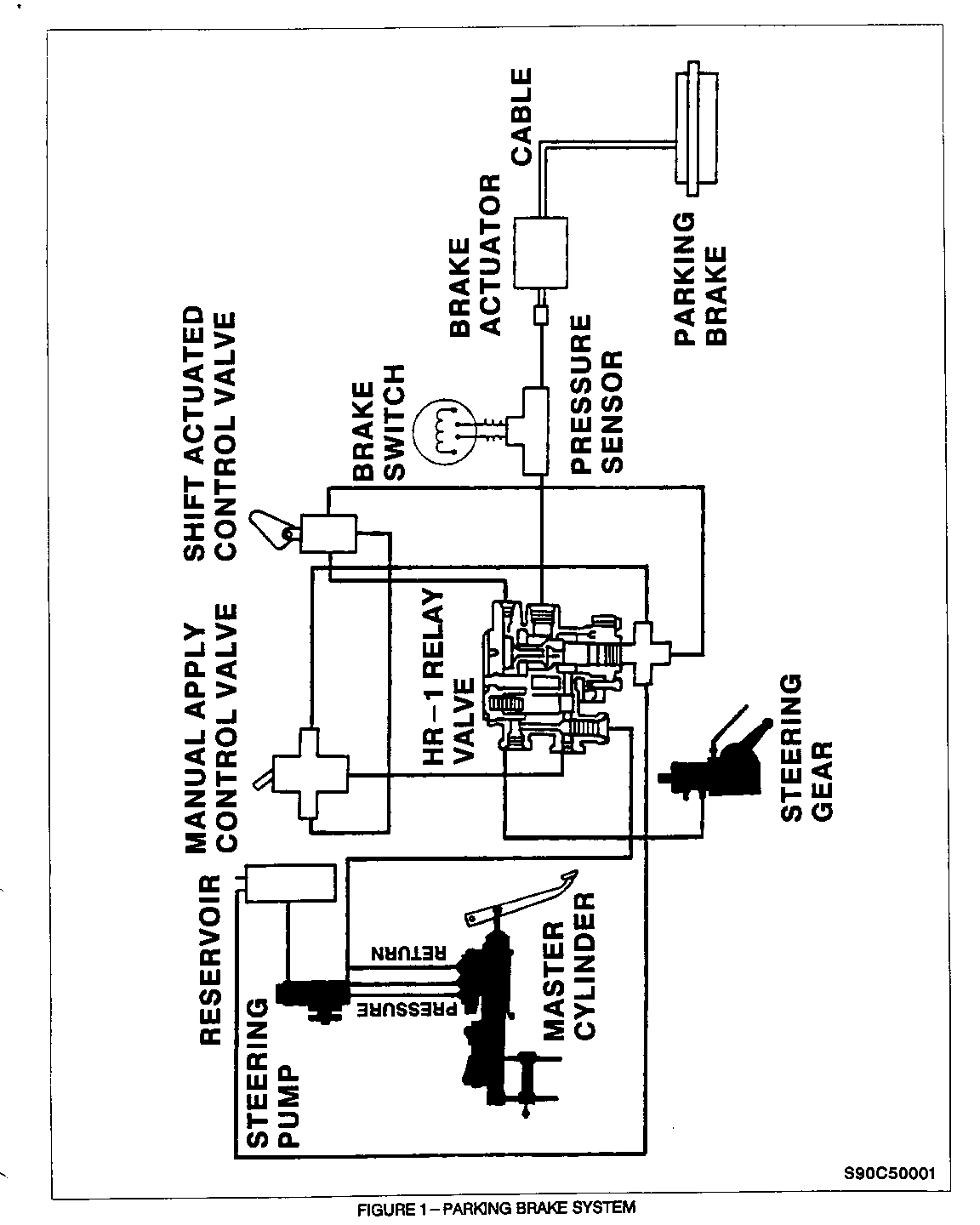
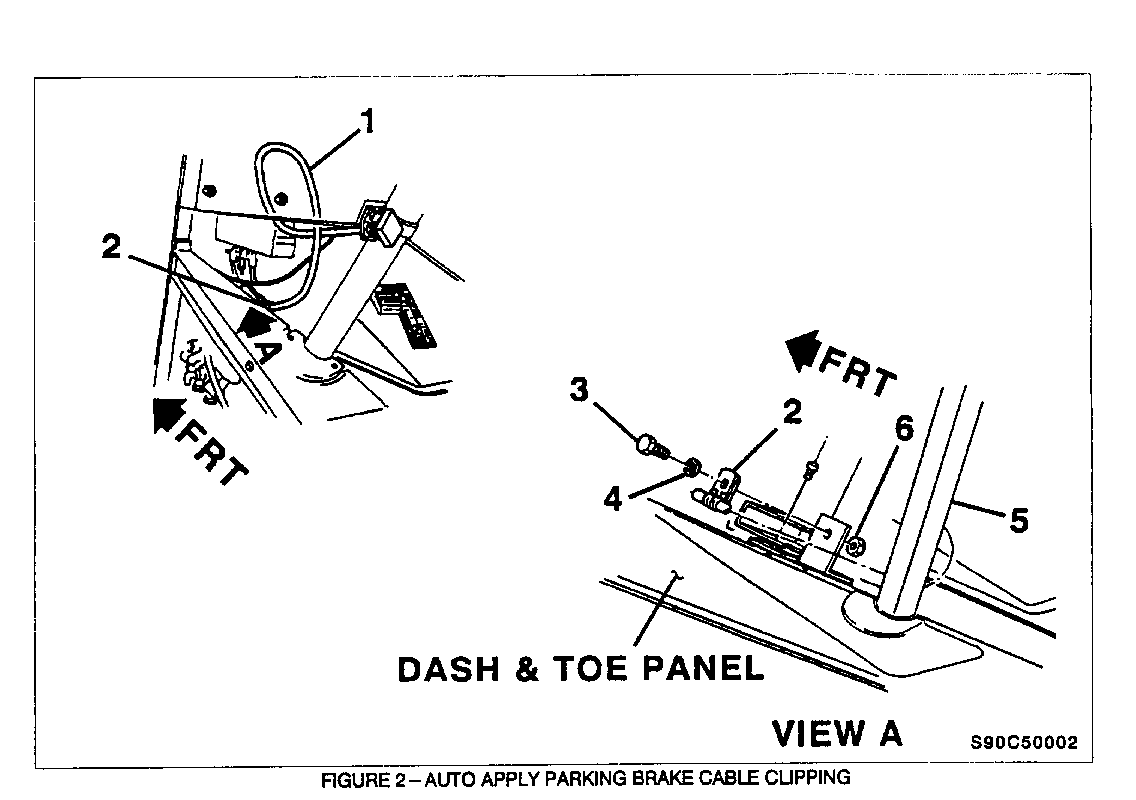
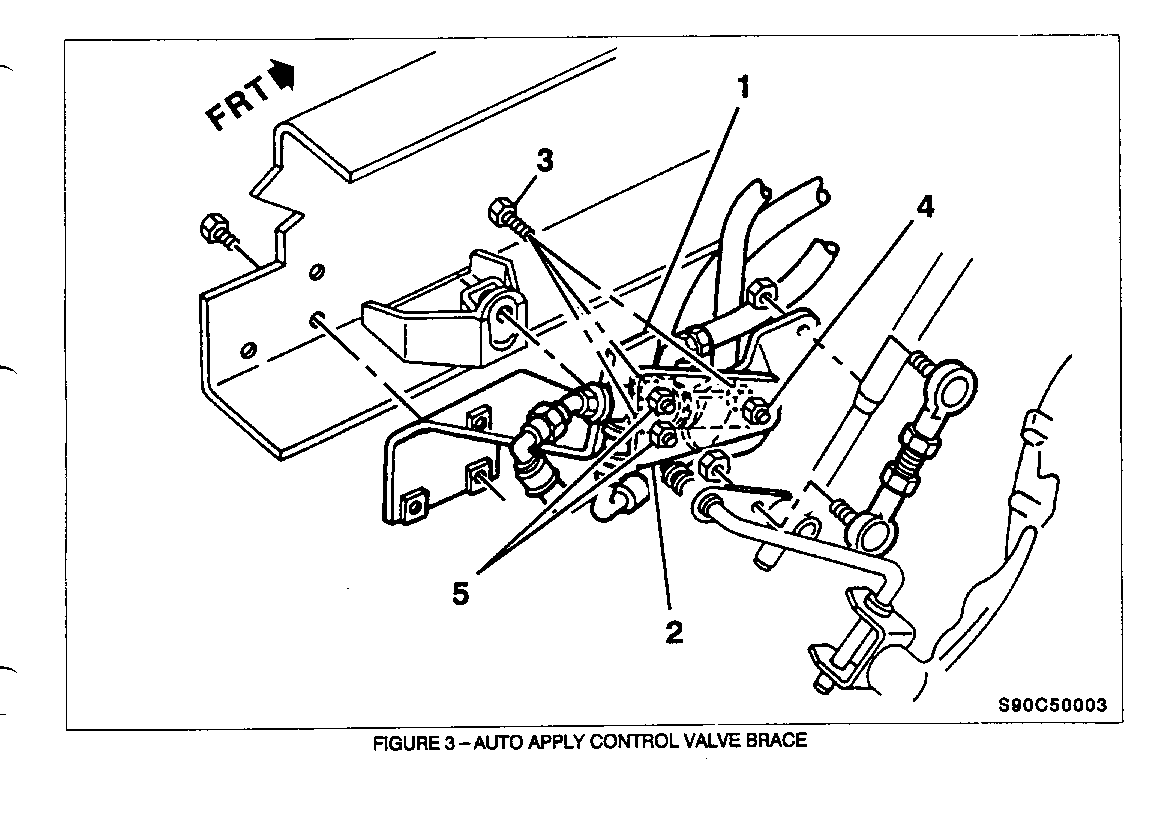
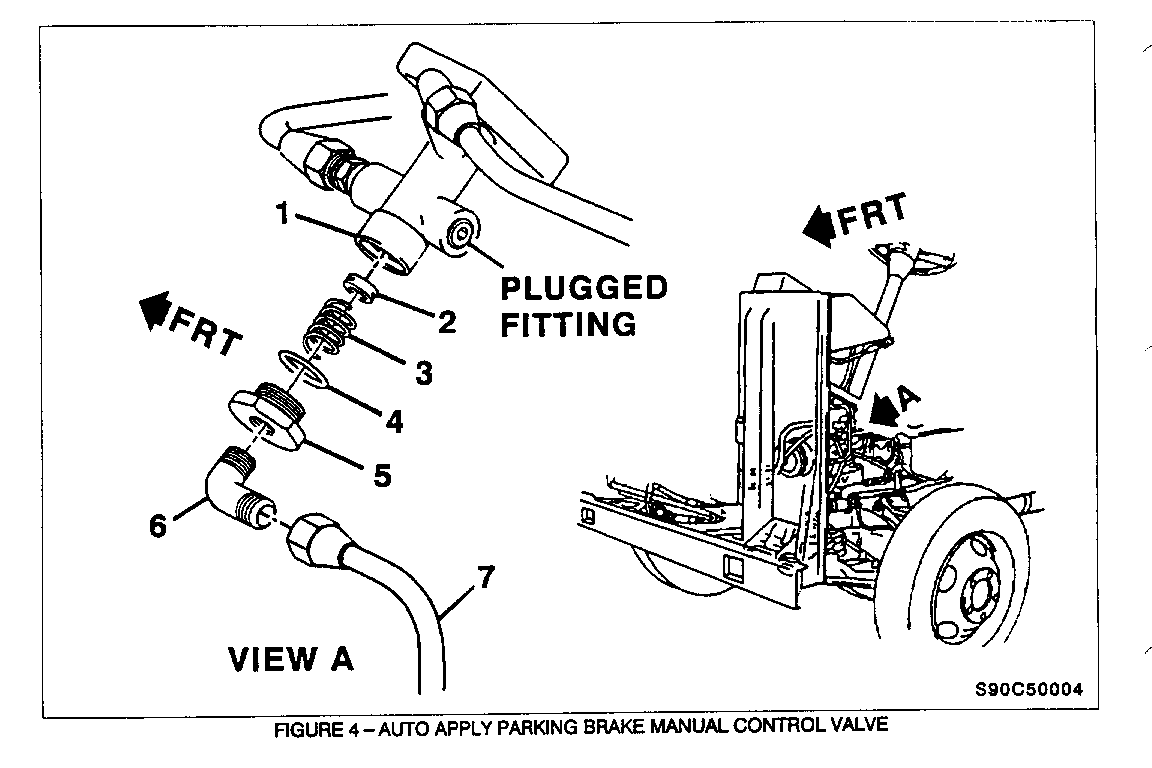
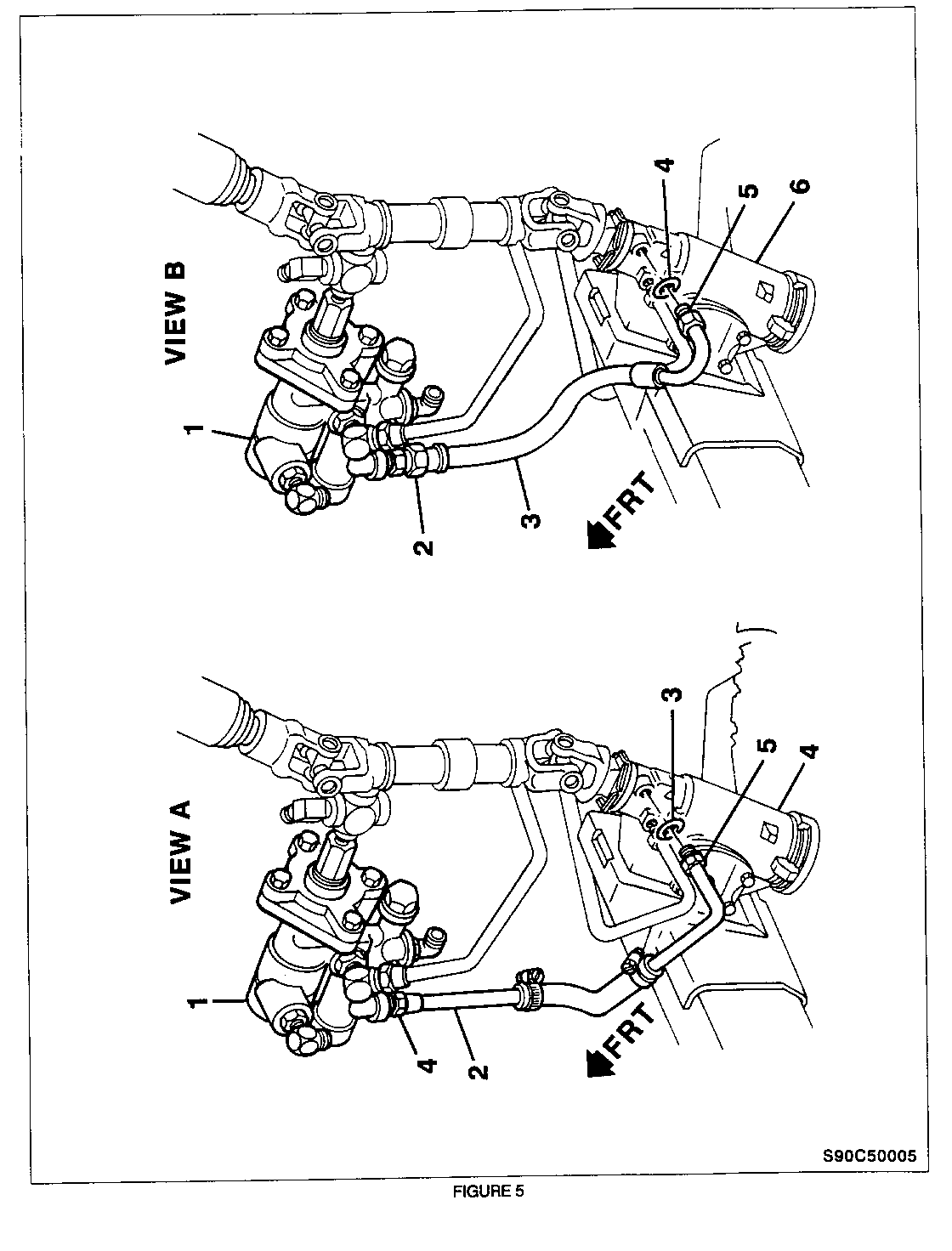
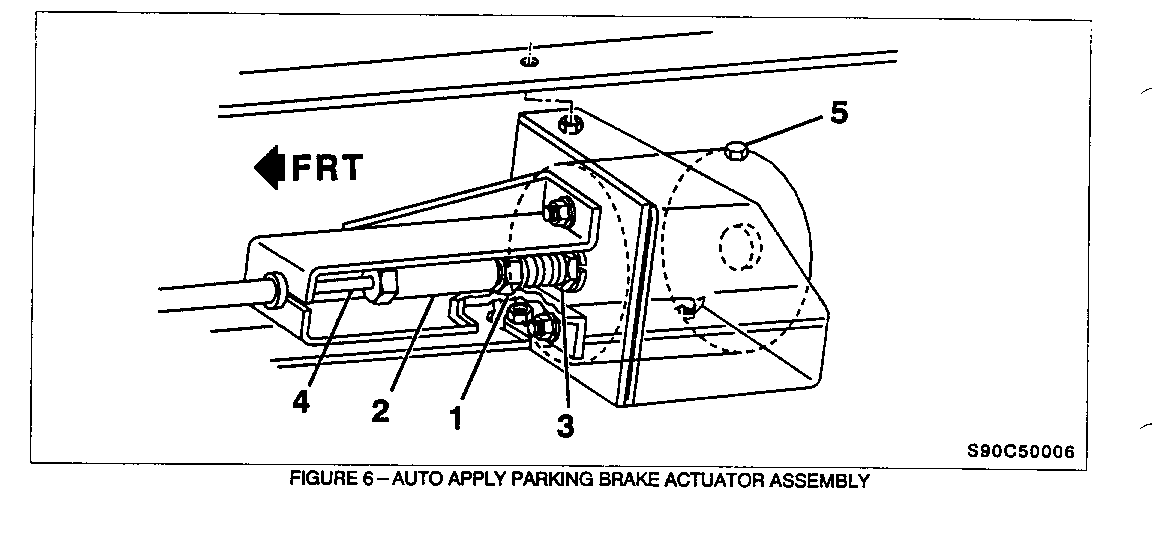

General Motors bulletins are intended for use by professional technicians, not a "do-it-yourselfer". They are written to inform those technicians of conditions that may occur on some vehicles, or to provide information that could assist in the proper service of a vehicle. Properly trained technicians have the equipment, tools, safety instructions and know-how to do a job properly and safely. If a condition is described, do not assume that the bulletin applies to your vehicle, or that your vehicle will have that condition. See a General Motors dealer servicing your brand of General Motors vehicle for information on whether your vehicle may benefit from the information.
